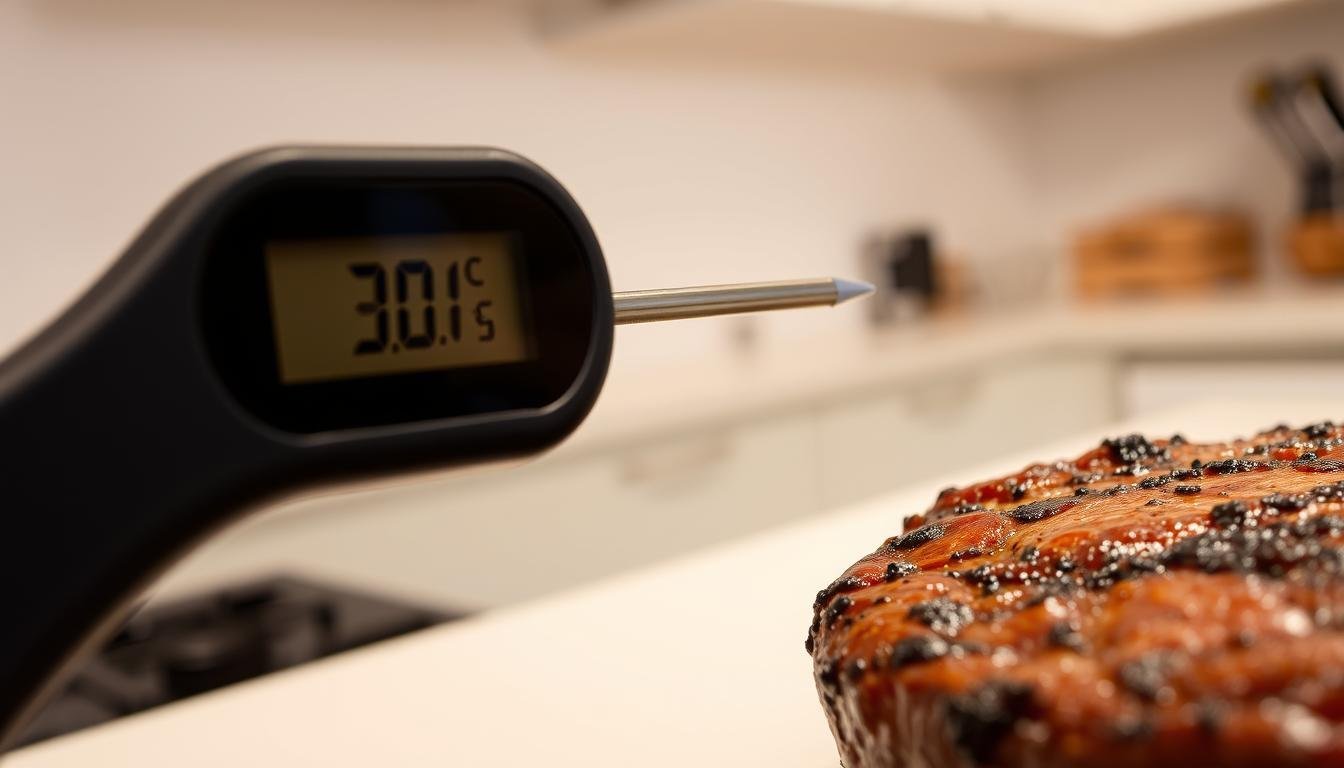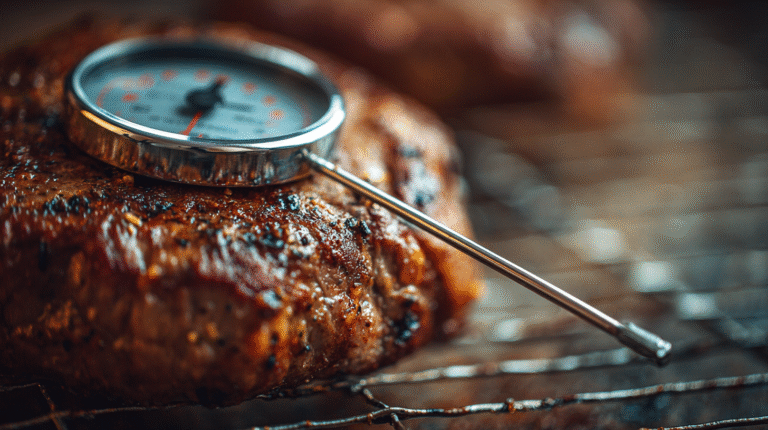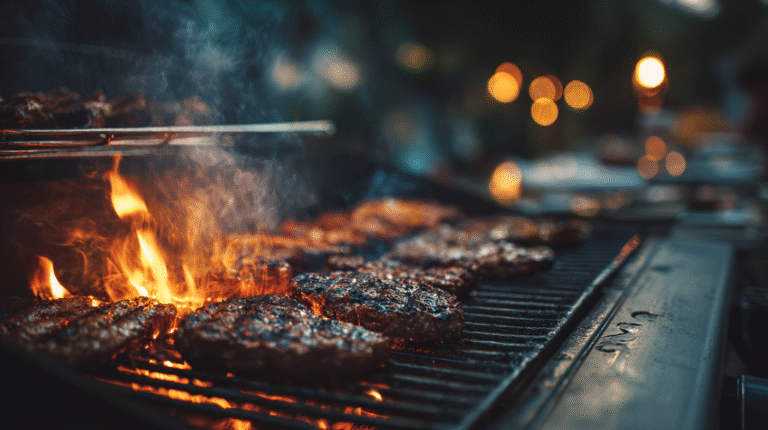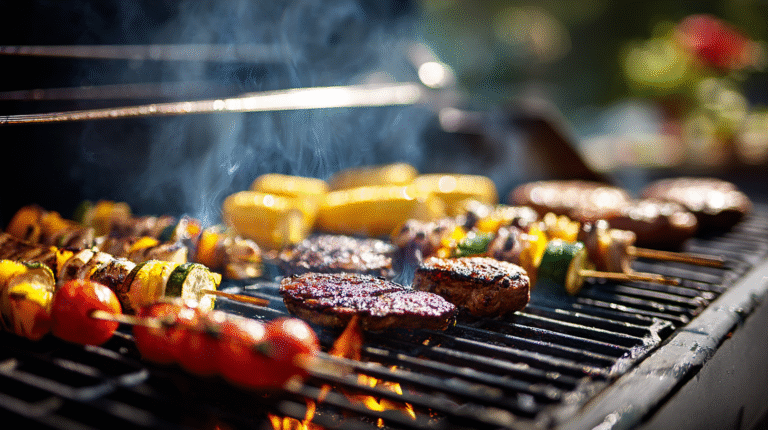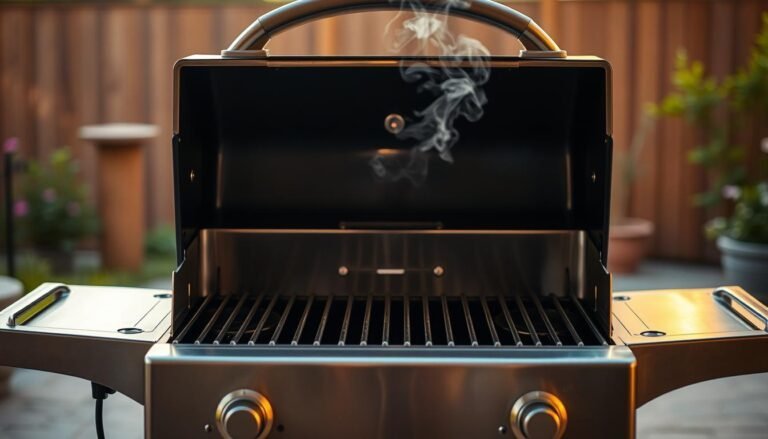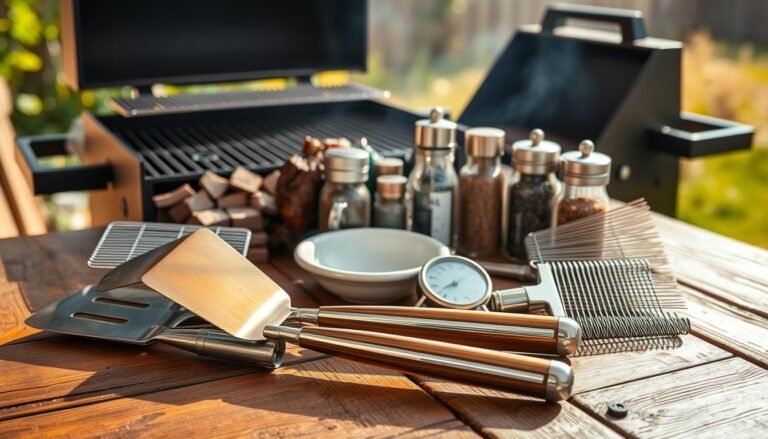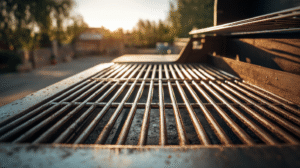Disclosure: This Post Contains Affiliate Links; We earn a commission on purchases.
Grilling is a favorite activity in the United States. But, it can be hard to get meat cooked just right. “A good thermometer is the best only way to guarantee that your meat is properly cooked.” This is because undercooked or overcooked meat can be dangerous.
With a meat thermometer, you can make sure your meat is cooked safely. This lowers the chance of getting sick from food. For the best results, get a top-notch thermometer from our recommended products.
Key Takeaways
- Using a meat thermometer guarantees properly cooked meat.
- It reduces the risk of foodborne illnesses by ensuring a safe internal temperature.
- A high-quality thermometer is an essential tool for safe grilling.
- Proper grilling techniques can be achieved with the right tools.
- Food safety is key when grilling.
The Importance of Meat Thermometers for Food Safety
Grilling is fun, but it’s also serious. It’s important to use a meat thermometer for food safety. Without it, undercooked meat can be a big health risk.
Why Guesswork Doesn’t Work When Grilling
Guessing if meat is cooked is not safe. Meat color can be tricky, even if it’s fully cooked. A meat thermometer gives you the exact temperature.
Foodborne Illness Risks from Undercooked Meat
Undercooked meat can make you very sick. The USDA says to cook poultry to 165°F for safety. A meat thermometer helps you cook meat safely.
Benefits of Perfectly Cooked Meat
Safe meat is also better tasting. Meat cooked right is tender and juicy. A meat thermometer helps you get great results every time.
Types of Meat Thermometers for Grilling
To grill meat perfectly, knowing the different meat thermometers is key. Butcher BBQ says digital thermometers change cooking for the better. They make sure meat is cooked just right.
Instant-Read Digital Thermometers
Instant-read digital thermometers give fast and accurate readings. They are great for checking meat’s internal temperature while grilling. They are small and simple to use.
Leave-In Probe Thermometers
Leave-in probe thermometers let you watch the meat’s temperature without opening the grill. This keeps the temperature steady.
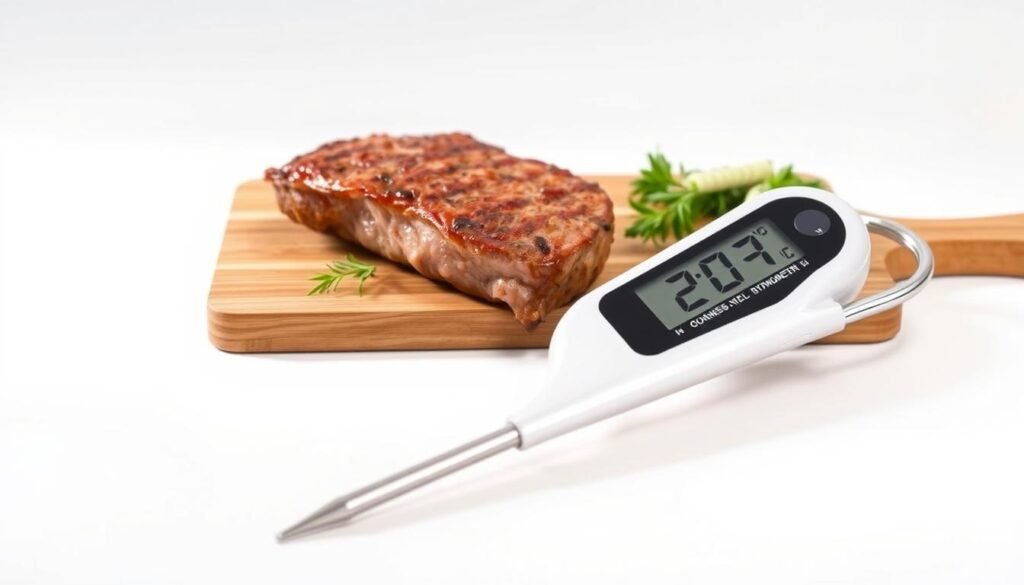
Wireless Smart Thermometers
Wireless smart thermometers have cool features like app control. This lets you monitor grilling from afar.
Analog Dial Thermometers
Analog dial thermometers are old-school but easy to use. They are cheaper but might not be as precise as digital ones.
Choosing the Right Thermometer for Your Needs
When picking a meat thermometer, think about accuracy, how easy it is to use, and extra features. The right one ensures safe meat temperature.
How to Use a Meat Thermometer for Safe Grilling
To grill meat safely, knowing how to use a meat thermometer is key. It removes the guesswork from grilling. This ensures your meat is cooked to a safe temperature.
Preparing Your Thermometer
Before grilling, prepare your thermometer right. This means calibrating and cleaning it.
Calibration Techniques
Calibration is important for accurate readings. To calibrate, put the thermometer in ice and water. It should read 32°F (0°C). If not, adjust it.
Cleaning and Sanitizing
Cleaning and sanitizing your thermometer is critical. After each use, wash it with warm, soapy water. Then, sanitize it with a solution.
Proper Placement Techniques
Where you place the thermometer is very important. Correct placement ensures accurate internal temperature readings.
Finding the Thickest Part of the Meat
For most meats, the thickest part is best for the thermometer. Serious Eats says this gives an accurate internal temperature reading.
Avoiding Bones and Fat
Bones and fat can give wrong readings. Avoid these areas when inserting the thermometer.
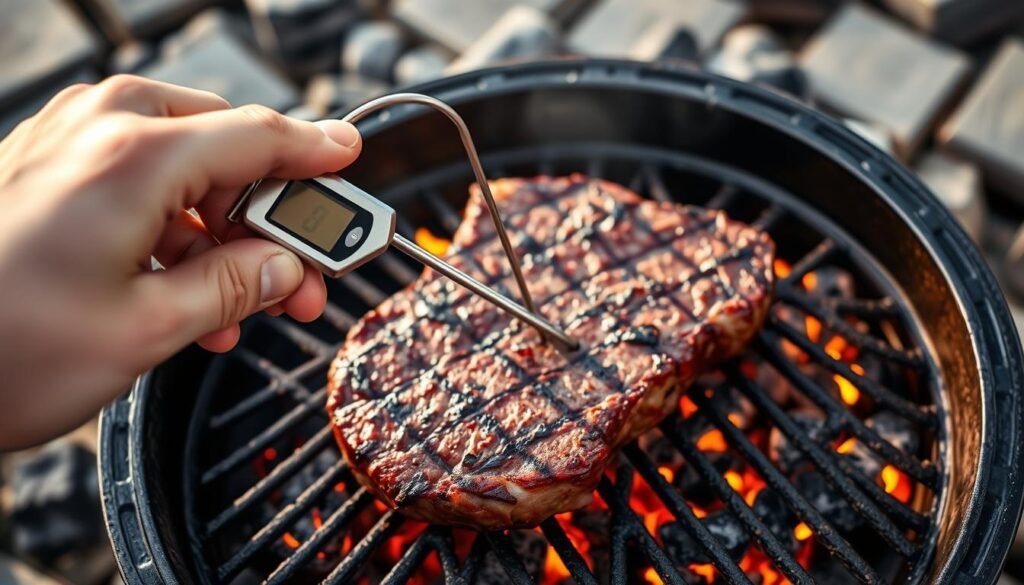
Reading and Interpreting Results
After correct placement, wait for the temperature to settle. The reading will show if the meat is cooked safely.
Timing: When to Check Temperature
When to check the temperature varies by meat type and size. Generally, start checking when the meat is almost done based on grilling time.
Safe Internal Temperature Guidelines for Different Meats
To have a great grilling time, knowing meat temperatures is key. A grill thermometer helps cook meat right and keeps it safe.
Beef and Lamb Temperature Guidelines
Beef and lamb can be cooked to different doneness levels. Each level has its own temperature range. Here are the beef temperatures:
Rare, Medium, and Well-Done Temperatures
- Rare: 130°F – 135°F
- Medium-rare: 135°F – 140°F
- Medium: 140°F – 145°F
- Medium-well: 145°F – 150°F
- Well-done: 150°F – 155°F
Ground Beef Safety Considerations
Ground beef needs extra care because of bacteria risks. The USDA says to cook it to at least 160°F for safety. For more on meat temperatures, check Chelsea Green.
Poultry Temperature Guidelines
Poultry, like chicken and turkey, must be cooked to 165°F to avoid illness.
Pork Temperature Guidelines
Pork needs to be cooked to at least 145°F. Then, let it rest for three minutes. This keeps pork safe and juicy.
Fish and Seafood Temperature Guidelines
Fish and seafood should be cooked to 145°F. But, tuna can be cooked lower if you like.
Resting Times and Temperature Carryover
After grilling, let the meat rest for a bit. The meat’s temperature will rise a bit more. For example, a steak at 130°F will be 135°F after resting.
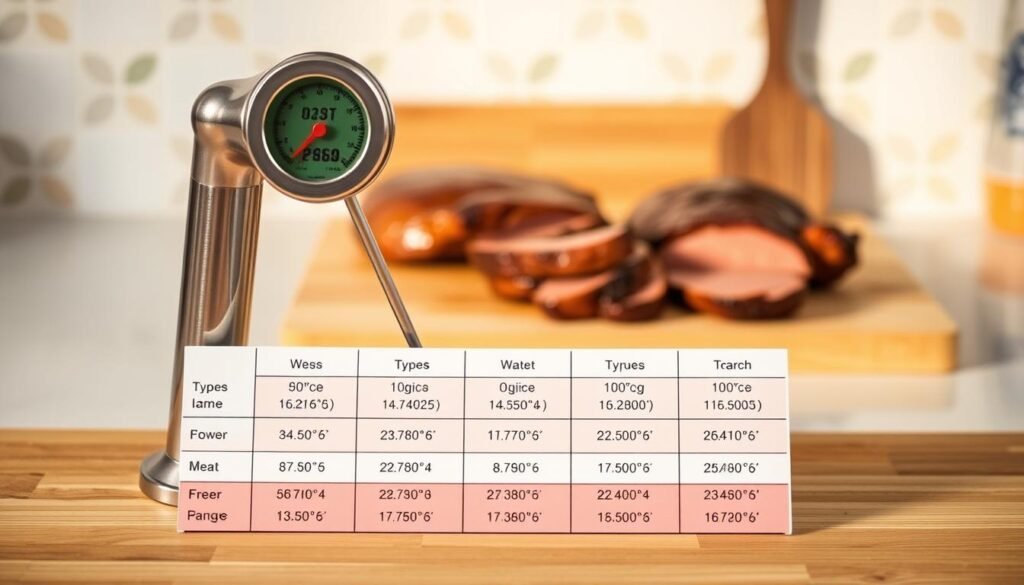
Conclusion
Using a meat thermometer is key for safe meat temperature and a perfect grilled meal. By learning how to use a meat thermometer, you can avoid foodborne illnesses. This way, you can enjoy your favorite dishes with confidence.
Safe grilling is not just about guessing. It needs precision and detail. By following the tips in this article, you can make sure your grilled meats are cooked right. This improves the taste and texture of your meals and keeps you healthy.
Getting a good meat thermometer is a smart move for better grilling. With the right tool and some practice, you’ll grill like a pro. You’ll serve up tasty and safe meals for everyone to enjoy.
FAQ
What is the most accurate way to check the internal temperature of meat while grilling?
How do I choose the right meat thermometer for grilling?
What are the safe internal temperatures for different types of meat?
How often should I check the temperature of my meat while grilling?
What is temperature carryover, and how does it affect my grilling?
Can I use a grill thermometer to check the internal temperature of my meat?
How do I properly clean and maintain my meat thermometer?

From quick grilling techniques to simple gear advice, Ryan helps beginners and busy home cooks fire up great meals without over-complicating it. Whether you’re using charcoal, gas, or a portable grill, Ryan’s goal is to make grilling approachable, fun, and full of flavor.
Subscribe to Our Newsletter

